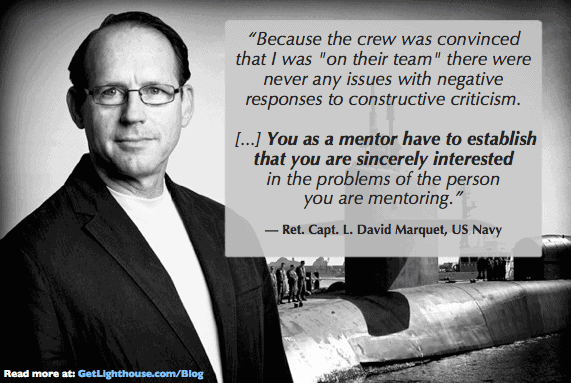More and more companies are embracing remote workers. As this happens the challenge becomes: how do you manage a remote team? And what do you do when half your team is with you in your office, and the other half are remote employees?
For many managers, this is the new reality they must deal with. And it's a big, new challenge.
Why did this happen?
There are a variety of reasons why this trend continues to grow (a 105% increase between 2005 and 2014) and companies are tempted to hire remotely:
- The rise of the nomadic Millennial: With the internet and easy travel, many are choosing to live and travel around the world instead of living in one place.
- The rising cost of living in cities: With many cities seeing skyrocketing costs of living, there are great savings to be had for companies by hiring someone living somewhere cheaper.
- Global communication tools: With Skype, Slack, Google Hangouts, Wikis, Email, and many more online tools, communication across cities and time zones has never been easier.
As a company, it's hard to resist the temptation to add remote employees with so much talent accessible around the world. Further fueling the interest, studies show a variety of benefits in employee engagement, stress levels, and productivity for those remote.
Not so easy for managers.
Unfortunately, adding remote team members is often done hastily, and without consideration for the additional challenges it presents. Managing someone that sits near you is very different than when they're remote. This only gets harder when they're the only remote person.
Today we tackle the most common challenges managers face with a partially remote team, and what to do about them.
The 5 Biggest Challenges of Managing a Partially Remote Team
The hardest thing about managing a partially remote team is all the things you don't notice.
Because some people aren't physically around, it's easy for "out of sight, out of mind" to rule the day.
Unfortunately, what you miss can hurt you, and your team. Whether it's a hit to morale, or inefficiencies and missed opportunities in your projects, managing people remotely adds a new degree of difficulty for managers like you.
Here's some of the biggest challenges we've seen and heard from managers as we've built Lighthouse to help.
1) Information Inequality
You heard that announcement in the office, right? Everyone that needed to hear the quick conversation 3 of your team members had in the hallway were there, too?
Chances are, your remote team members did not hear those things. While no one is everywhere, those that are remote miss way more communication than others.
A little empathy goes a long way.
Especially when they're one of the few (or only) remote employees, it's easy to forget what they don't know. Your view of the office, projects, team chemistry, and information is very different from what they see.
While no one knows everything, remote staff are at a major disadvantage that goes much deeper than missing a hallway chat or two. They're missing the majority of discussions in many cases.
This is where your skills of empathy become critical. Walk in your remote team member's shoes and recognize all the things you see and hear that they don't. That sincere interest will pay major dividends.
What to do about it:
The first step is recognizing this is an issue. Once you realize all the little things they're missing, a few tactics can help close the gap:
- Recognize it in the moment: If you hear something they should know, build the habit of looping them in, either right away, or share it with them later. Whether it's a quick note, quick call, email, or chat message, it can make all the difference.
- Answer their questions in one on ones: Your one on ones are even more important for remote team members, who you don't get to communicate with as often each day. A great use of a one on one with them is to fill them in on things they may have missed, and to let them ask questions about things they feel left out of.
- Build inclusive habits: When possible, encourage your team to get remote team members on a Skype/video call if they should be a part of a discussion. If they're not awake or online, ask yourself if it can wait until they are available.
Next time you're talking to a remote team member, ask them, "Is there anything you feel out of the loop on?" You may be surprised how many questions they have for you.
2) Social Disconnect
Did the team go out for a meal or drinks? Everyone but your remote team member was bonding then.
That may not seem like such a big deal, but over time, it can create a feeling of division on your team. While most on your team members have built rapport and gotten to know each other, your remote team members will still just be a face in chat.
When the chips are down, rapport matters most.
Rapport becomes especially important when your team is stressed, or working through major challenges. When you have rapport with someone, you're more likely to give them the benefit of the doubt. When you don't, it's much easier to jump to conclusions, or have less patience.

This only gets harder when there's less communication between remote and office team members. Small misunderstandings can quickly become bigger problems simply because someone doesn't get the benefit of the doubt. As Indra Nooyi suggests above, this benefit of the doubt is critical to how problems are addressed and solved.
What to do about it:
It's important to find ways for your remote team members to build rapport and connect with colleagues. There's a variety of ways you can do this ranging from no cost, to bigger financial investments:
- Have a retreat: Buffer, Zapier, Olark, and many other fully remote companies use these to have concentrated opportunities for bonding and communication by having everyone in person at least once a year.
- Bring them in for a visit: You may not have a role that allows you to have everyone remote fly in, but you may more easily get budget to have just the people on your individual team visit for a few days. With that visit you can plan some social events and key planning to take advantage of the time. The success from a quick visit can help make the case for future, longer visits.
- Make time for informal chat: Your in office team members talk for a few minutes at the start or end of the day, and "around the water cooler" to build bonds. Encourage small talk during meetings your remote people are a part of so they have more chances to build rapport and connections, too. You can also try Buffer's Pair calls.
Ensuring remote team members build rapport with everyone can make all the difference in how well your team works together. Be intentional about creating opportunities for everyone to connect with those not in the office with you.
3) Delayed Adjustments
When you sit next to your coworker, it's easy to turn to them with questions. When they instead sit thousands of miles, and possibly multiple time zones away, that's not so easy.
When you hire someone who's in a different time zone, the first thing to suffer is often work coordination. Where you may have previously been able to turn and ask a question mid-day on a project, now that same person is realizing everyone is asleep or away from work.
This can prevent them from getting critical mid-process feedback. Not wanting to be unproductive, they continue in the direction they started until they can reconnect the next day.
Delayed communication is costly.
When your remote team members have to wait for feedback, it can slow them, and your whole team, down. Not only can they lose a whole day's work, you may end up waiting another day for them to then complete the work as needed after getting feedback. These delays can add up fast, pushing back completion dates on critical projects.
In a past job, I worked with a designer who was overseas while I was in the US. Our workdays only overlapped for a few hours, making communication tough.
More than once, we had projects where the work I found in the morning was not what we needed. I was then left waiting most of my day before I could give feedback. Then, the wait would be another day to see changes. The same work that could have been done in a single day with better communication, stretched to two and a half.
It wasn't until I stepped up and started checking in during the middle of their day, but pretty late for me, that we tightened our iteration cycles. Those mid point check ins ended the "lost days," and gave them confidence there was a good time to ask questions once they got into a project.
What to do about it:
Get creative. Think about ways you can give your team members in different time zones chances to get mid-day feedback and help:
- Pair the right people together: When you can, avoid having people work together who have little or no overlap in time zones. Or try Buffer's Pair calls to be very intentional about creating more communication between them.
- Assign multiple projects: If your remote team members have 2 projects, they can switch to the other project when they get stuck on one and it's not a good time to ask a key question. This way, they'll still be productive without doing wasted work.
- Make off-hours communication okay: If it's not clear it's okay, your remote team members may be afraid to ask for help in off hours. Lead by example and make it okay to answer a question even if it's a bit early in the morning or late in the evening.
A few small adjustments can make all the difference in your team's velocity. Taking some time to be intentional in how you support your remote team members can have a major impact on this.
4) One-way Inconvenience
When you and the main team are all in the same location or time zone, it's easy to focus on times that are most convenient for you. This leaves your remote team members regularly re-arranging their life to fit your needs.
Yes, they signed up for this when they took the job. However, as a leader, you shouldn't ask your team to do anything you wouldn't do.
Leadership by example matters even more.
How you treat your remote team members will be followed by the rest of your team.
If you always ask those remote to be inconvenienced, so will the rest of your team. Never underestimate how meaningful it can be to occasionally be flexible for your remote people. Take a late call, or one super early in the morning when you can.
This is also where the power of repetition comes into play.
Your example may be clear to your office team members that see you every day. However, your remote colleagues will not see you.
Be intentional, and over-communicate key ideas and behaviors so that your remote team members pick up on them, too. This helps ensure the culture you develop is consistent for everyone on your team. Repeating habits, like accommodating your remote people from time to time can make a big difference.
What to do about it:
Think long and hard about the example you're setting for your team. What do your remote people see? How are they treated compared to your in office team? These approaches can help:
- Always think about the remote perspective: Build the habit of asking yourself if they're missing anything important. Are you communicating to them things that your in-office team members are seeing and hearing? Are they being included in decisions, or told after the fact?
- Use your one on one meetings to reinforce key ideas: If you're not sure they're fully on board for an idea, or that they missed a key bit of information, use your one on ones to get out of communication debt with them. Our one to one template will also come in handy for you.
- Make the same sacrifices you ask them to make: Even the occasional sacrifice on your part can mean a lot to them as they may regularly start their day extra early or be asked to work late hours.
Your example, and the habits you build, make all the difference in how your remote team members will feel.
5) No Growth
All the studies we have looked at here at Lighthouse have shown that the #1 perk that employees want is growth and development.
This is true regardless of age, role, or location. It tops commonly believed top perks like higher pay, flexible work hours, and better healthcare.
Your remote team members want to grow, too. Just because they work from a home office or co-working space does not mean they do not want to grow.
Find a growth path for everyone on your team. You may be surprised the interesting projects they want to take on, or other opportunities they're excited about.
Get creative about remote growth.
To advance to a key leadership role often requires a person to be present in your main office. A mistake that some managers make is to assume moving isn't something a remote team member will consider. If you haven't directly asked them, you won't know.
However, even if moving isn't of interest, there's plenty of ways for your remote people to still grow. There's many alternative ways to grow beyond promotions. All it requires is an open conversation with them, and a little creativity by both of you.
What to do about it:
Making sure all of your team members are growing is easier than you may think. Make some time to talk about their growth, and then make a plan so they make regular progress. Here's a few ways to get started:
- Talk about it in your one on one meetings: You should see a trend by now. Your one on ones are critical and there's a lot of ground to cover with your remote employees. Growth conversations are a great use of your one on one time.
- Make tweaks to their role: They can further develop their skills in their existing role by taking on new projects, or tweaking their responsibilities.
- Help them keep learning: You can buy them a book that's shipped to their home just as easily as your office. If you'd fly an office team member to a conference, offer to do the same for those that are remote (Bonus: it can give your office & remote people a chance to bond).
Employee turnover is expensive no matter if they're remote or in person. A lack of growth is one of the biggest reasons someone may leave their job, or become bored and disengage.
Don't make the mistake of forgetting to grow your remote team members.
--
Bringing it all together:
Treat your remote employees like equals. Help to compensate for anything they miss by not being in the office, and you'll put yourself in a position to get the same productivity and effectiveness from them as your in-office employees.
Managing remote team members requires a different set of skills and awareness. If you're looking for further reading on the subject, these posts can help:
- Tips on managing remote employees
- HBR's in depth look at managing global teams
- More common mistakes made with remote workers
Are you growing as a leader? Are you building the skills you need?
Whether your team is in office with you or remote, Lighthouse Lessons can teach you the skills you need to better lead, motivate, and grow your team. Let us help you navigate the unique challenges of being a leader like we helped Daniel by learning more and signing up here.













